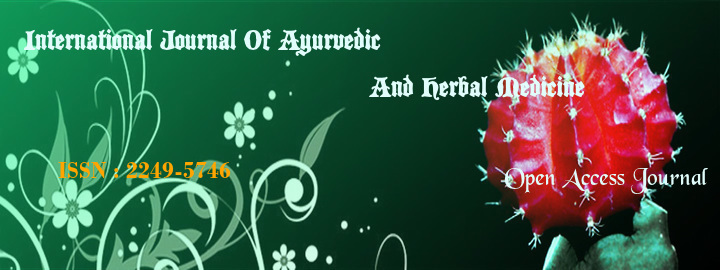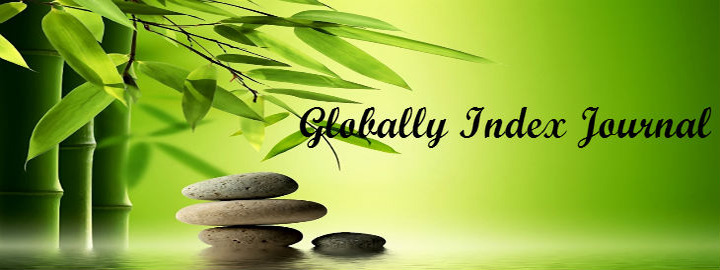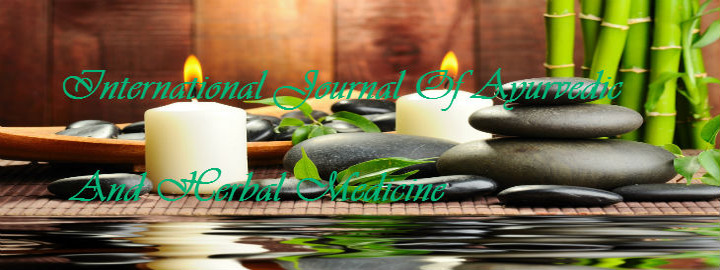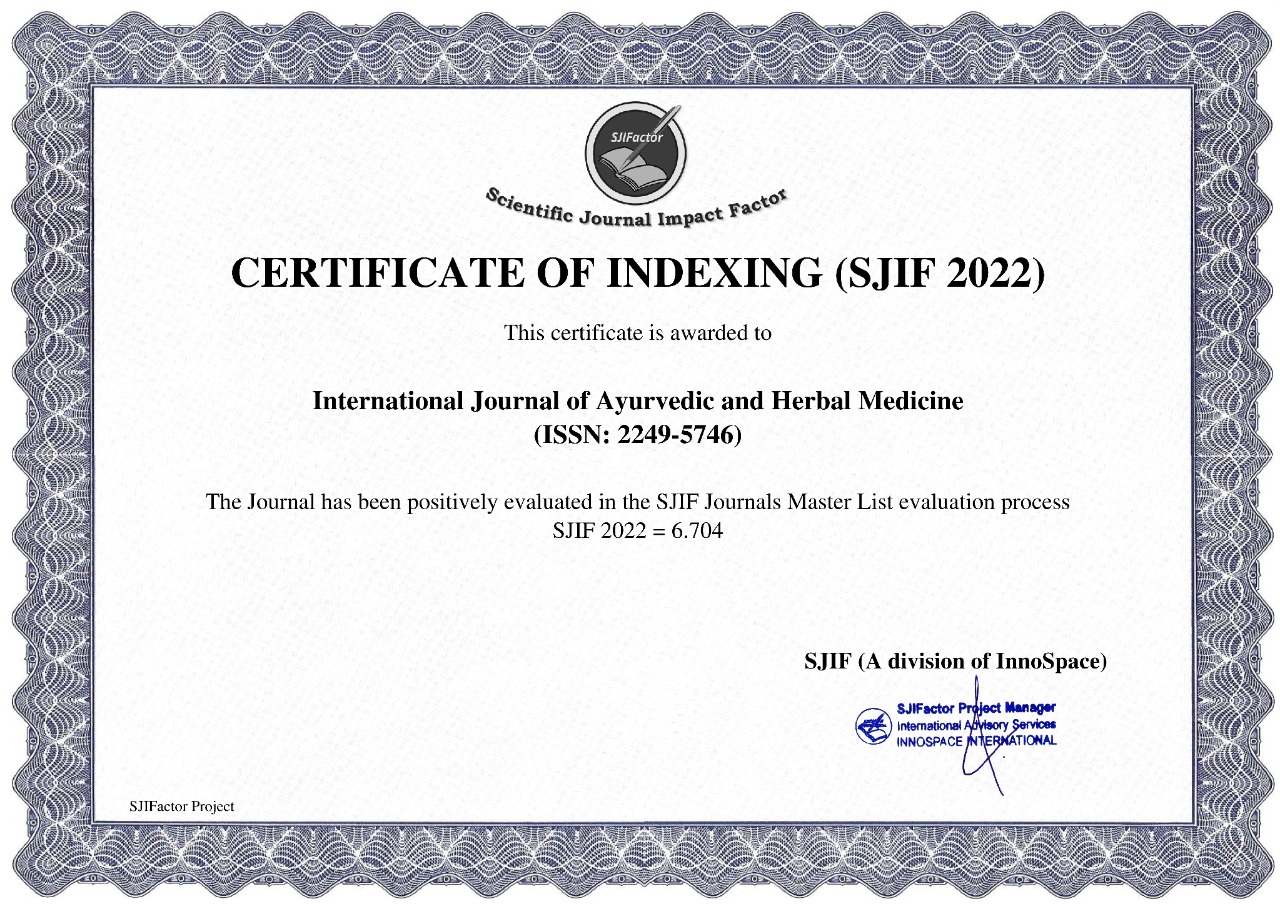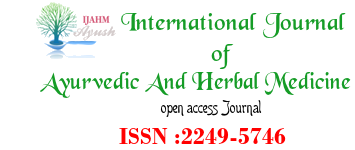


Patil Usha
Reader, Sri JayendraSaraswati Ayurveda College and Hospital, Nazaretpet, Chennai 600123
This email address is being protected from spambots. You need JavaScript enabled to view it.
Abstract
Prameha (Diabetes Mellitus)a metabolic disorder is one of the Asthamahagada. Various drugs and formulations have been explained in the text for the treatment of prameha depending upon the involvement of the dosh and dushyas. Nishamalaki is one of the effective formulations explained in astangahradaya for the management of Prameha.
The concept of samaskara has been explained in caraka samhiavimanashana for the transmigration of gunas better therapeutic effect of the drugs. In the present study effect of bhavana samskara on physico-chemical and phytochemical characters of nishamalaki formulations developed at pharmacy of Sri Jayendra Saraswathi Ayurveda College, Chennai. .
The nishamalki formulation was prepared by mixing the Nisha (Curcuma longa) and Amalaki (Emblica officinalis) powders in equal proportions. The mixture was triturated with juice of Amalaki for three days. Nishamalaki powder without any treatment with juice was considered as control. Organoleptic, microscopic, phytochemical and levels of Vit C and curcumin was estimated. Among the physico-chemical characters, the formulations following samaskara showed increased levels of total ash, water soluble ashand yield of alcoholic extract while other parameters showed no significant change.
Nishamalaki following samskara showed the presence of proteins, carbohydrates, phenol, tannin and flavanoids in the aqueous extract while alcoholic extract showed the presence of proteins, carbohydrates, tannin, flavanoids, glycosides, steroids, terpenoids and alkaloids. In control formulation phenols, tannins and favanoids were present in aqueous extract while proteins, carbohydrates, phenols and tannins were present in alcoholic extract. A significant difference in Vit C and curcumin levels were observed following samskara of nishamalaki.
Observed improvement in the active constitutes following bhavana samaskara confirms the scientific basis behind methods and procedures suggested in preparation of ayurvedic formulations.
REFERANCES
1.Sastri K. (2006),edited by Dr. Gangasahaya Pandeya, Caraka Samhita, Vimanasthana 1/22,Chaukambha Sanskrit Sansthan, Varanasi
2.Kaviraja Atrideva Gupta, edited by Vaidya Yadunadana Upadhyaya, Astanga Hradaya, Prameha Chikitsasthana 12/5, Chaukambha Sanskrit Sansthan, Varanasi; 372.
3. Edward C.R.W, Bouchier I.A.P, Haslett C., Davidson Principles of Medicine; 1990. 724.
4. Sastri, K.A, Susruta Samhita Sutrasthana. 46/144, Chaukambha Sanskrit Sansthan, Varanasi; 2012. 256.
5. Chunekar K.C, edited by G.S. Pandey, Bhavaprakasha Nighantu, Chaukambha Bharati Academy, Varanasi; 1995
6. Narahari, edited by Indradeo Tripathi, Raja Nighantu, Karaveeradi Varga Krishnadas Academy, Varanasi; 1998. 371.
7. Chunekar K.C, edited by G.S.Pandey, Bhavaprakasha Nighantu, Chaukambha Bharati Academy, Varanasi; 1995. 132.
8. Sastri K.V,Susruta Samhita Sutrasthana 46/144,Chaukambha Sanskrit Sansthan, Varanasi; 2012. 256.
9. Satry J.L. Illustrated Dravya Guna Vigyan Vol 2,ChaukambhaOrientalia, Varanasi; 2014.220.
10.Chunekar K.C, edited by Dr.G.S.Pandey, Bhavaprakasha Nighantu, Chaukambha Bharati Academy, Varanasi; 1995. 132.
11.Chunekar K.C, edited by G.S.Pandey, Bhavaprakasha Nighantu, Chaukambha Bharati Academy, Varanasi; 1995.132.
12.Chunekar K.C, edited by G.S.Pandey, Bhavaprakasha Nighantu, Chaukambha Bharati Academy, Varanasi; 1995.132.
13.Sastri K.A,Susruta Samhita Sutrasthana 46/144,Chaukambha Sanskrit Sansthan, Varanasi; 2012. 256.
14.SatryJ.L,Illustrated Dravya Guna Vigyan, Vol 2, Chaukambha Orientalia, Varanasi; 2014. 513.
15.Trease E.G, Evans W.C, Pharmacognosy.11thed. Bailliere Tindall, London; 1978.115.
16. Ayurvedic Pharmacopeia of India, Ministry of Health andFamily Welfare.New Delhi; 1996.
17. Kapur A, Haskovic A, Copra-Janicijevic A, Klepo L, TopcagicTahirovic I, Sofic E,. (2012). Spectrophotometric analysis of total ascorbic acid content in various fruits and vegetables. Bulletin of the Chemists and Technologists of Bosnia and Herzegovina, 2012; 40; 40-44.
index







